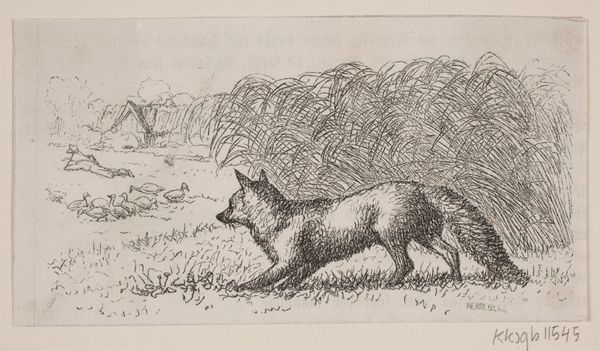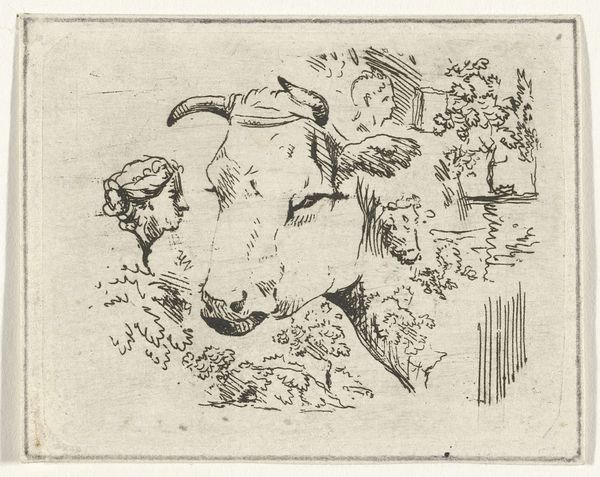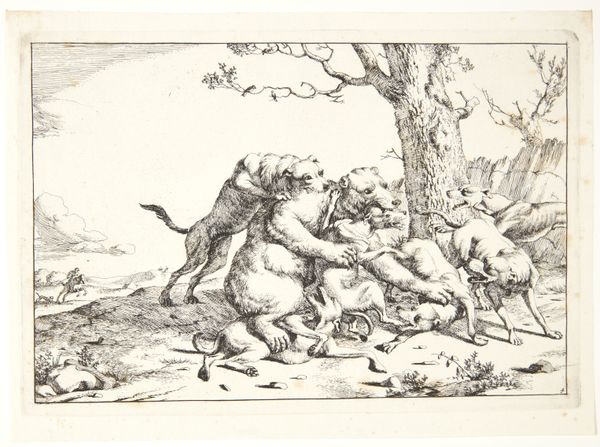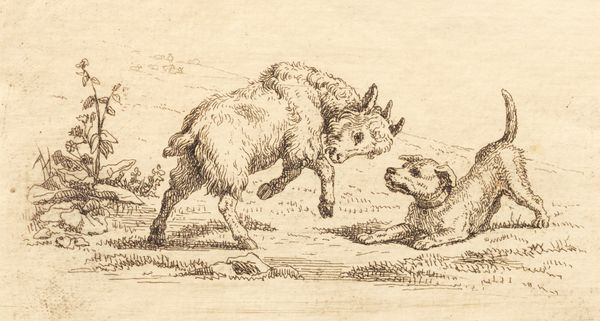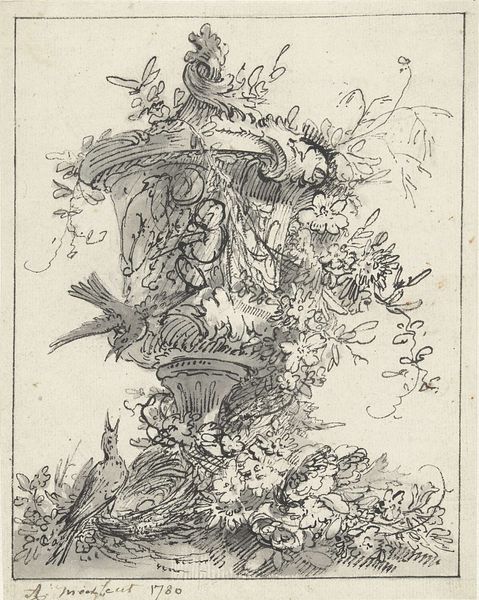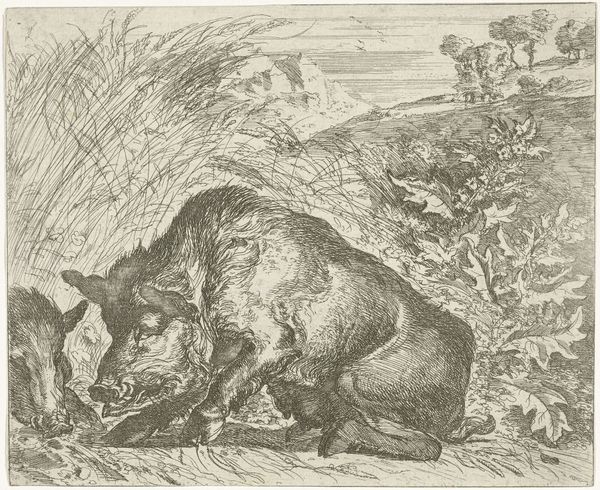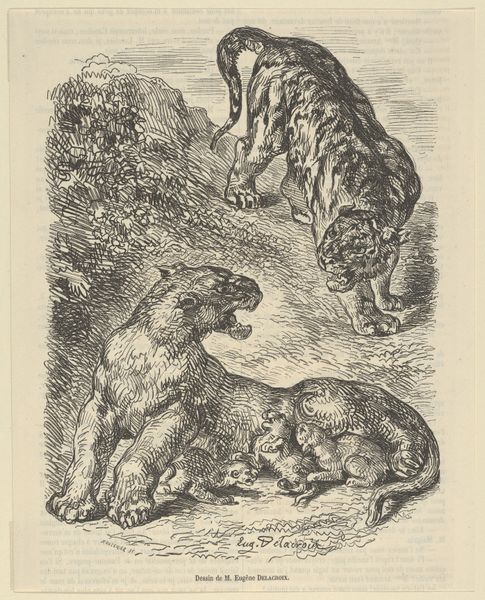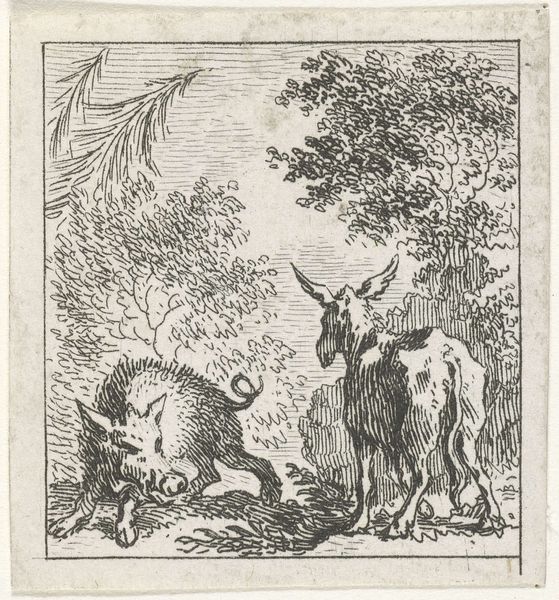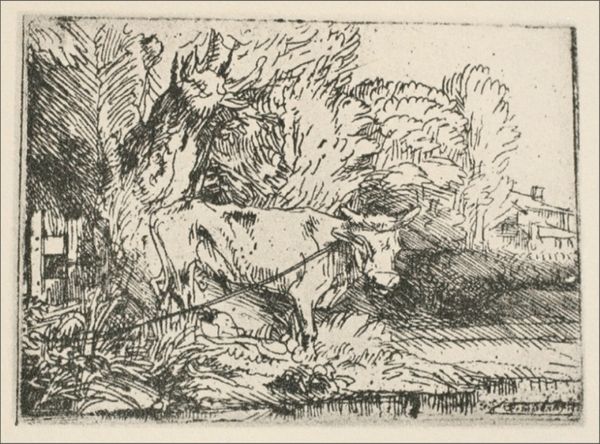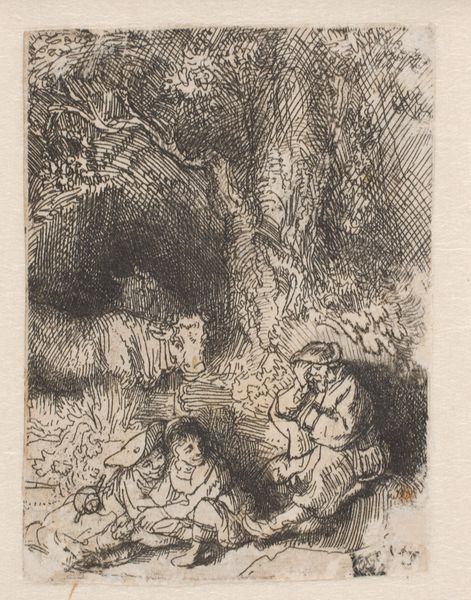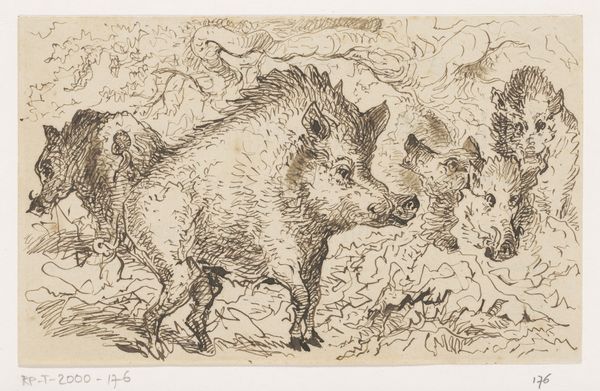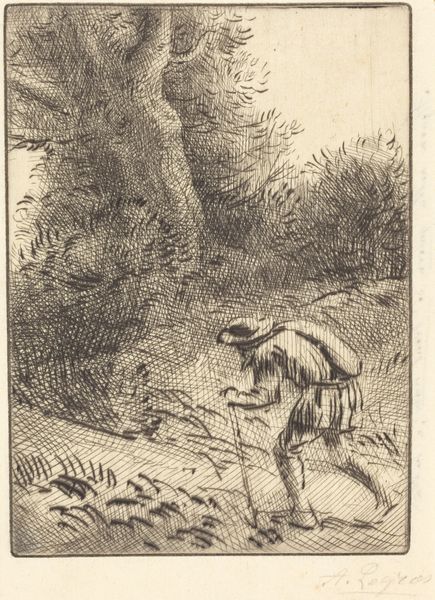
drawing, print, etching
#
drawing
#
ink painting
# print
#
etching
#
pencil sketch
#
landscape
#
genre-painting
#
realism
Dimensions: Sheet (Trimmed): 2 3/4 × 2 7/16 in. (7 × 6.3 cm) Plate: 2 3/4 × 2 7/16 in. (7 × 6.3 cm)
Copyright: Public Domain
Charles Jacque made this etching, Swineherd, sometime in the 19th century. The magic of etching resides in the alchemical combination of materials: metal, acid, and ink. The artist would have first coated a metal plate with a waxy, acid-resistant ground. Using a needle, he scratched an image into this ground, exposing the metal underneath. The plate was then submerged in acid, which bit into the exposed lines, incising the image. After removing the ground, the plate was inked, and the surface wiped clean, leaving ink only in the etched lines. Finally, the plate was pressed against paper, transferring the image. Consider the deep, rich blacks and the delicate, flickering lines. These are direct results of the etching process, and give the image a tactile, almost sculptural quality. This print represents a moment in the daily life of a rural laborer. It reminds us that even seemingly simple images are born from a complex interplay of material, process, and social context.
Comments
No comments
Be the first to comment and join the conversation on the ultimate creative platform.
